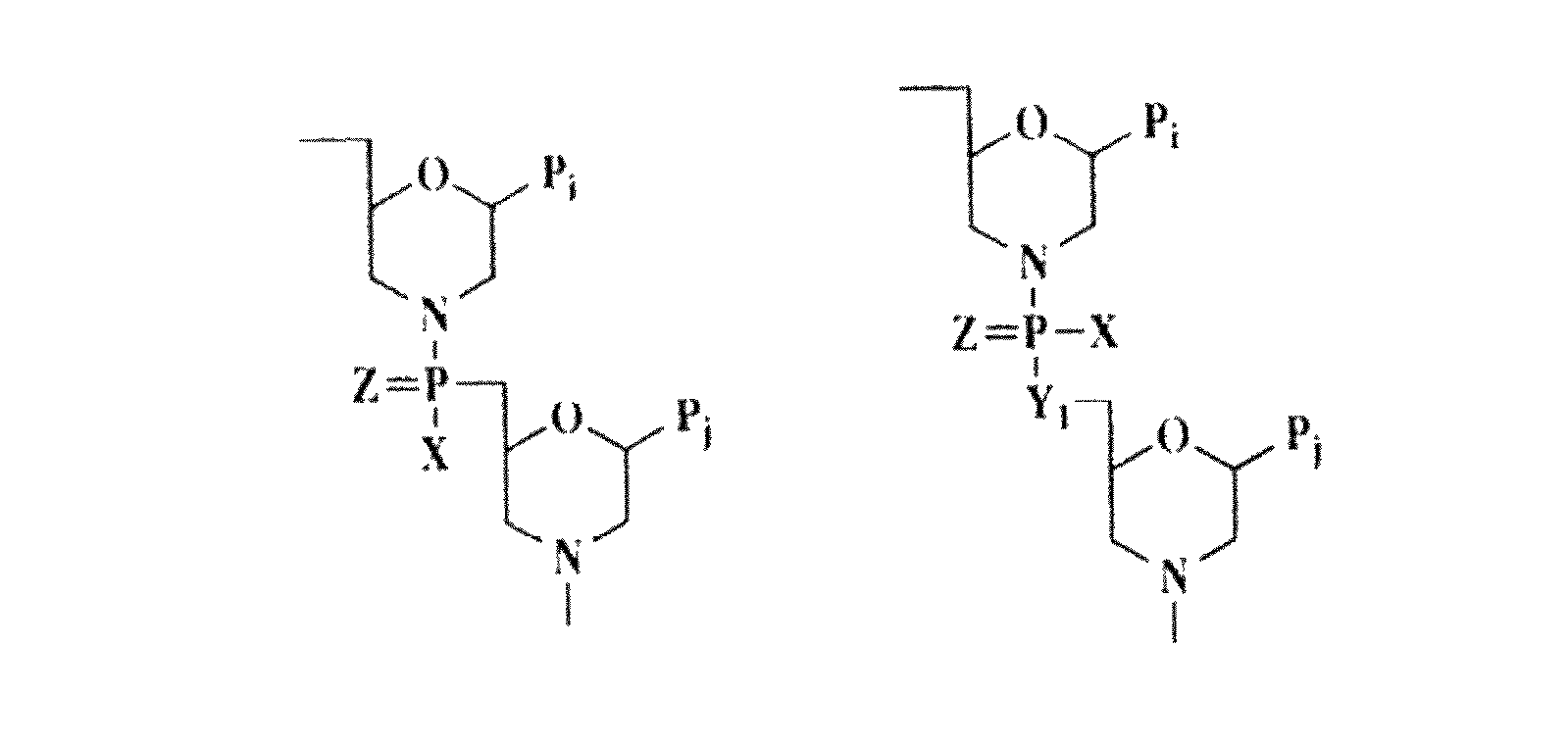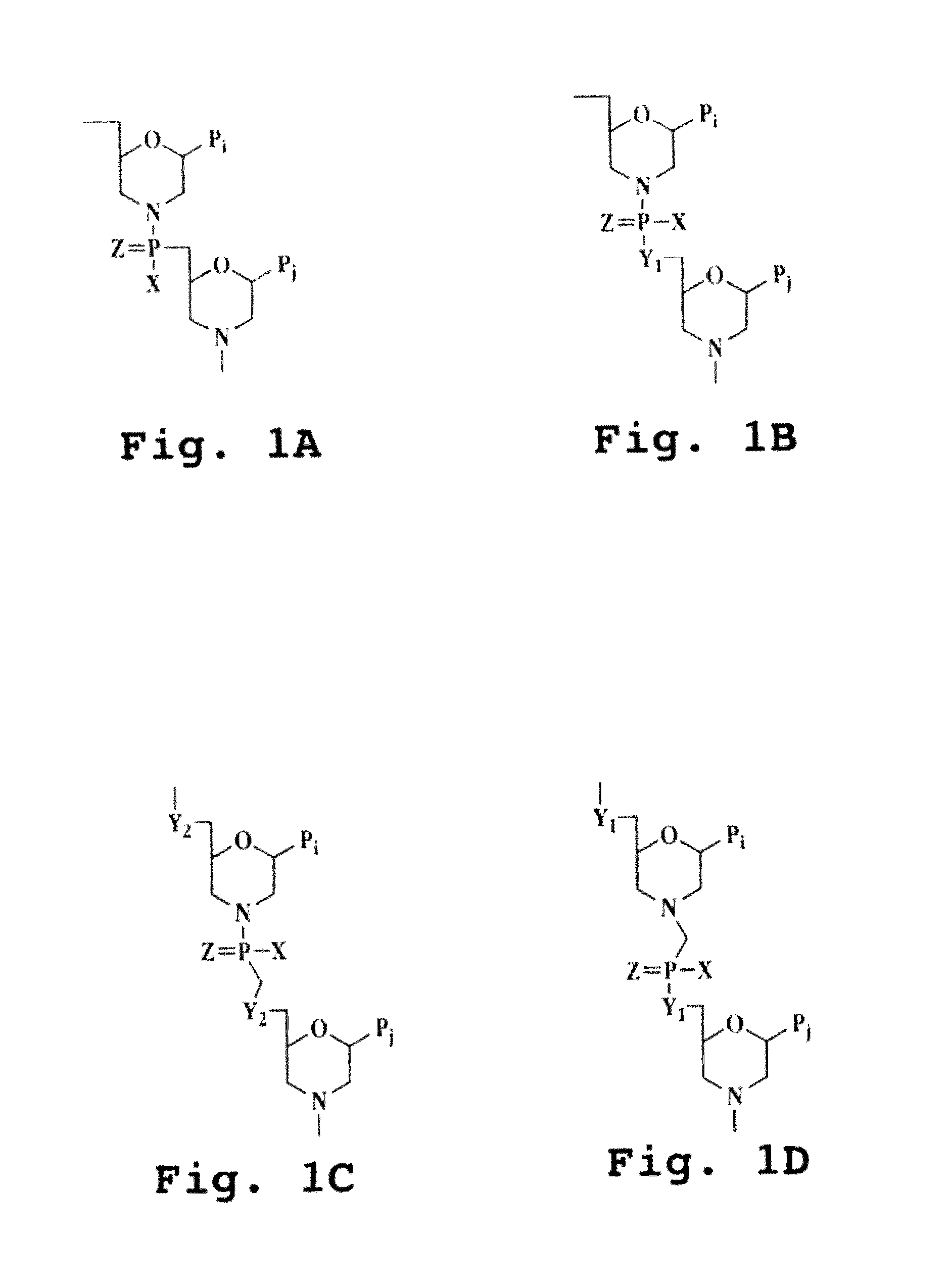Immunosuppression compound and treatment method
a technology of immunosuppression compound and treatment method, which is applied in the field of methods and antisense oligonucleotide analog compounds, can solve the problems of inability to achieve long-term results, inability to respond to immunosuppression, and inability to achieve long-term effects, so as to achieve the effect of suppressing the immune respons
- Summary
- Abstract
- Description
- Claims
- Application Information
AI Technical Summary
Benefits of technology
Problems solved by technology
Method used
Image
Examples
example 1a
Splice-Altered mRNAs Derived from B6 and NOD Splenocytes After Treatment with PMOs Targeting Splice Donor or Splice Acceptor Sequences
[0163]CTLA-4 mRNA isoforms were examined by RT-PCR using messenger RNA (mRNA) isolated from B6 splenocytes stimulated with mitogen and treated with the various PMOs (10 micromolar) in culture for 24 hours. Alterations to the size of the products were observed by agarose gel electrophoresis stained with EtBr and are shown in FIG. 4A. PMOs targeting splice acceptor sites (SA) were more efficient for altering splicing compared to those targeting splice donor sites (SD). FIG. 4B shows the results of RT-PCR examination of mRNA derived from NOD splenocytes treated with PMOs. A similar splice alteration pattern as was seen for PMO-treated B6 splenocytes is induced in cells treated with as little as 0.5 micromolar PMO targeting SA2 (muCTLA-4SA2; SEQ ID NO:11). FIG. 4C is a control experiment and shows that protein molecules related to CTLA-4 (ICOS and CD28) b...
example 1b
Splice-Site Region, Dose, and Specificity Effects
[0165]Targeting of sequences surrounding the intron / exon boundary was conducted, employing PPMOs flanking both sides of the SA2 intron-exon boundary as well sequences inside the intron and exon (FIG. 12A). As seen in FIG. 12C, sequences positioned both at the exon side of the SA2 intron / exon boundary (lane 5, SEQ ID NO: 11) and at the intron side of the SA2 intron / exon boundary (lane 4, SEQ ID NO: 23) were effective in inducing liCTLA-4. In addition, a PPMO oligomer sequence positioned 67 bp into the exon (lane 8) was also potent in inducing the altered splice form of the CTLA-4 mRNA.
[0166]The activity of the SA2 PPMO (SEQ ID NO: 11) was examined to determine if induction of liCTLA-4 behaves in a dose dependent manner, with the results shown in FIG. 13A. In this figure, the lanes represent: (lane 1) φX-Hae III, (lane 2) Control, No Treatment, (lane 3) 0.1 μm, (lane 4) 0.5 μm, (lane 5)1 μm, (lane 6) 2 μm, and lane (7) 5 μm SA2 oligomer...
example 2
The Effect of CTLA-4 Splice Altering PMOs on T cell Activation, Proliferation and Adhesion Activity
[0168]The early activation T cell marker CD69 was examined by flow cytometry after 16 hr treatment with anti-CD3 antibody and with or without treatment with muCTLA-4SA2 PMO (SEQ ID NO:11) at a 5 micromolar concentration. The resulting diminution in CD69 expression compared to untreated stimulated cells demonstrates an influence of the PMO on the activation state of the T cells. The graph in FIG. 6 shows CD69 levels gated on CD4+ cells.
[0169]The influence of splice altering CTLA-4 PMOs on cell proliferation is shown in FIG. 7. Purified mouse T cells were labeled with CFSE and then stimulated with anti-CD3 antibody. The cells were cultured for 48 hrs with either PMO (5 micromolar) or anti-CTLA-4 antibody or isotype. Cellular division was examined by flow cytometry gating on live cells. Proliferation was inhibited by the CTLA-4 agonist antibody and by treatment with the muCTLA-4SA2 PMO co...
PUM
| Property | Measurement | Unit |
|---|---|---|
| Tm | aaaaa | aaaaa |
| Tm | aaaaa | aaaaa |
| Tm | aaaaa | aaaaa |
Abstract
Description
Claims
Application Information
 Login to View More
Login to View More - R&D
- Intellectual Property
- Life Sciences
- Materials
- Tech Scout
- Unparalleled Data Quality
- Higher Quality Content
- 60% Fewer Hallucinations
Browse by: Latest US Patents, China's latest patents, Technical Efficacy Thesaurus, Application Domain, Technology Topic, Popular Technical Reports.
© 2025 PatSnap. All rights reserved.Legal|Privacy policy|Modern Slavery Act Transparency Statement|Sitemap|About US| Contact US: help@patsnap.com



